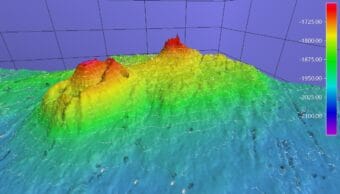
A University of Alaska Fairbanks scientist has found evidence of relatively recent volcanic activity on Venus. UAF Geophysical Institute professor Robert Herrick reviewed radar imagery of the surface of Venus collected over eight months in 1991 by NASA’s Magellan spacecraft and found evidence of lava flow at a vent on Venus’s largest volcano: Maat Mons.
“Not only is it 9 kilometers high, it covers an area that is over a thousand kilometers across, so we’re looking at a very small part of a gigantic volcano,” Herrick said.
A paper outlining the discovery was presented at the Lunar and Planetary Science Conference happening this week in Texas. Speaking during a press conference Wednesday, Herrick explained the time lag between collection of Venus imagery by Magellan and the identification of active lava flow on Maat Mons. He said the ability to screen the vast amount of imagery gathered by Magellan was initially limited by technology.
“The type of analysis that resulted in this discovery, really required the ability to pan around few hundred gigabyte data sets and zoom in and out,” he said.
Herrick’s co-author, NASA’a Scott Hensley, emphasized that there’s no algorithm to search out the geographic changes caused by lava flow.
“This is still a manual task,” he said. “So you do need that new technology for displaying things because we can’t write mathematical code that can search through all the data to find that.”
Herrick and Hensley’s research, which was published Wednesday in the journal Science, adds Venus to a short list of bodies in our solar system known to be volcanically active. Herrick says future Venus observation missions will likely document volcanic flows that have happened since those seen in the images captured by Magellan over 30 years ago.



